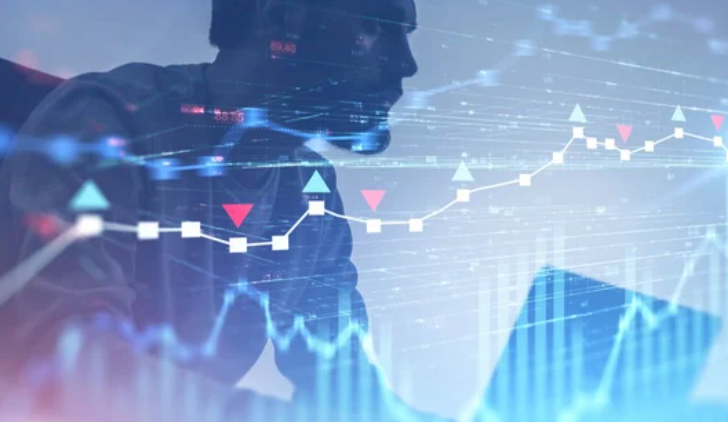
Introduction to Backtesting in Trading
Backtesting is a crucial process in trading that allows traders to test their strategies against historical data to evaluate their potential performance in real market conditions. Essentially, backtesting provides a “look back” into how a trading strategy would have fared based on past price movements. For both novice and advanced traders, backtesting is a vital tool for improving and optimizing trading strategies before risking actual capital.
On TeonGas, the backtesting feature is particularly powerful, offering traders the ability to experiment with different strategies, analyze results, and refine their approaches. By simulating trades with historical data, traders can gain confidence in their strategies and identify potential weaknesses.
The Backtesting Process
Backtesting involves running a trading strategy through historical market data to evaluate its performance. The process is straightforward but requires careful attention to detail. Here’s a step-by-step guide to backtesting on TeonGas:
- Choose a Strategy: Define the rules and parameters of your trading strategy (e.g., entry/exit points, stop-loss levels).
- Select Historical Data: Access historical price data for the asset(s) you’re testing on TeonGas.
- Run the Backtest: Apply your strategy to the historical data to simulate trades.
- Review the Results: Analyze key metrics such as profitability, risk, and performance consistency.
TeonGas provides users with various backtesting tools to ensure accuracy and reliability, allowing you to run backtests on different assets and timeframes.
Analyzing Historical Data
One of the core components of backtesting is having access to a comprehensive dataset of historical market data. This allows traders to evaluate how their strategies would have performed under various market conditions. The ability to analyze historical data gives traders insights into potential challenges their strategies may face, such as periods of high volatility or market stagnation.
TeonGas offers traders access to an extensive repository of historical data, ensuring you have a wide range of timeframes and market conditions to test against. The platform allows traders to filter data by specific dates, assets, and trading pairs, providing a granular level of analysis.
Interpreting Backtest Results
Backtesting generates various performance metrics that traders must interpret to understand the effectiveness of their strategies. Some key metrics include:
- Win Rate: The percentage of trades that were profitable.
- Average Gain/Loss: The average profit or loss per trade, indicating the strategy’s profitability over time.
- Maximum Drawdown: The largest decline in portfolio value from peak to trough during the testing period. A lower drawdown suggests lower risk.
- Sharpe Ratio: This ratio measures the risk-adjusted return, helping traders understand whether the strategy’s returns justify the risk.
Interpreting these results is essential for refining the strategy. For instance, if your backtest shows a low win rate but a high Sharpe ratio, the strategy might still be viable with slight adjustments to risk management.
Common Pitfalls in Backtesting
While backtesting is an invaluable tool, it’s easy to fall into certain pitfalls that can lead to inaccurate results:
- Overfitting: This occurs when a strategy is too finely tuned to historical data, making it less effective in real-time markets.
- Ignoring Transaction Costs: Not accounting for trading fees, slippage, and other costs can distort backtesting results.
- Testing on Limited Data: Using too short a timeframe or a narrow data set can lead to skewed results.
On TeonGas, you can avoid these pitfalls by backtesting on a broader range of data and considering transaction costs in your simulations.
User Experiences with Backtesting Strategies
TeonGas users who have incorporated backtesting into their trading workflow often highlight how the process has helped them refine their strategies. One user mentioned that after backtesting their swing trading strategy on multiple assets, they discovered specific assets performed better during certain market conditions, allowing them to focus on more profitable trades.
Another trader shared that by backtesting different stop-loss levels, they were able to minimize their losses during volatile market periods. These success stories demonstrate the value of incorporating backtesting into your strategy development process.
Continuous Improvement Through Backtesting
Backtesting isn’t a one-time activity; it should be a continuous part of a trader’s strategy refinement process. Markets evolve, and so should trading strategies. By periodically backtesting strategies on fresh data, traders can adapt to changing market conditions and fine-tune their approaches.
TeonGas allows traders to update their strategies and re-test them as new data becomes available. This ensures that you are always working with the most relevant information, improving the odds of success in real-time trading.
Table: Key Metrics Used in Backtesting
| Metric | Description | Importance |
| Win Rate | Percentage of profitable trades | Indicates strategy effectiveness |
| Average Gain/Loss | Average profit or loss per trade | Helps assess overall profitability |
| Maximum Drawdown | Largest peak-to-trough decline | Measures risk exposure |
| Sharpe Ratio | Risk-adjusted return measure | Evaluates return relative to volatility |
Conclusion: Leveraging Backtesting Tools on TeonGas
Backtesting is a critical tool for any serious trader looking to improve their performance. By testing strategies against historical data, traders can gain valuable insights into their potential success in real markets. TeonGas provides an array of powerful tools that make backtesting both accessible and highly effective, allowing traders to simulate different market conditions and refine their strategies.
Whether you’re a beginner or an advanced trader, backtesting should be an integral part of your trading process. Use the tools on TeonGas to continuously improve your strategies, mitigate risks, and enhance your trading outcomes.
FAQ
Backtesting involves running a trading strategy on historical data to evaluate how it would have performed in the past. It helps traders identify strengths and weaknesses in their strategies.
TeonGas offers powerful backtesting tools that allow users to simulate trades on historical data, helping them refine their strategies before applying them in real markets.
Key metrics include win rate, average gain/loss, maximum drawdown, and Sharpe ratio. These metrics help evaluate the effectiveness and risk of a strategy.
Avoid overfitting your strategy to historical data, ignoring transaction costs, and backtesting on limited data sets. These mistakes can lead to inaccurate results.
Backtesting should be a continuous process. As market conditions change, it’s important to re-test and refine your strategies to stay ahead.

James Bennett is a renowned expert in the field of cryptocurrency, with over a decade of experience in digital finance. He is the founder and editor of CryptoInsight, a leading website that provides in-depth analysis, news, and tutorials about cryptocurrencies. James is passionate about educating people on the intricacies of blockchain technology and digital assets.


No Comments